Contents
- Crop Cultivation
- Agricultural Communities
- Festivals/Rituals related to farming
- Dhawara
- Yel Amavasya Puja
- Types of Farming
- Traditional Agricultural Practices
- Dashparni Extract
- Jivamrut (जिवामृत)
- Use of Technology
- Institutional Infrastructure
- College of Agriculture, Dharshiv
- Market Structure: APMCs (as of September 2024)
- List of APMC markets(as of September 2024)
- Farmers Issues
- Rainfall issues
- Graphs
- Irrigation
- A. No. of Projects
- B. No. of Ponds/Vilage Lakes and Storage Dams
- C. Irrigation Beneficiary Area vs Irrigated Area
- D. Share of Beneficiary Area Irrigated
- E. Tubewells and Pumps Installed In The Year
- F. Irrigation and Water Pumping Facilities
- Cropping Metrics
- A. Share in Total Holdings
- B. Cultivated Area (With Components)
- C. Gross Cropped Area (Irrigated + Unirrigated)
- D. Share of Cropped Area Irrigated
- E. Distribution of Chemical Fertilizers
- Land Use and Credit
- A. Area of Agricultural Land Holdings (With Size Group)
- B. Size Groups' Share in Total Agricultural Land Holdings Area
- C. No. of Agricultural Land Holdings (With Size Group)
- D. Size Groups' Share in Total No. of Agricultural Land Holdings
- E. Agricultural Lending
- F. Agricultural Credit as a share of Total Credit
- Sources
DHARASHIV
Agriculture
Last updated on 6 November 2025. Help us improve the information on this page by clicking on suggest edits or writing to us.
Dharashiv district is located in the Marathwada region of Maharashtra, in the Western Plateau and Hills Region. Known for its rich black soil, typical of the Deccan Plateau, the district’s economy is primarily agricultural, with Soybean and Sugarcane as the major crops.
Crop Cultivation
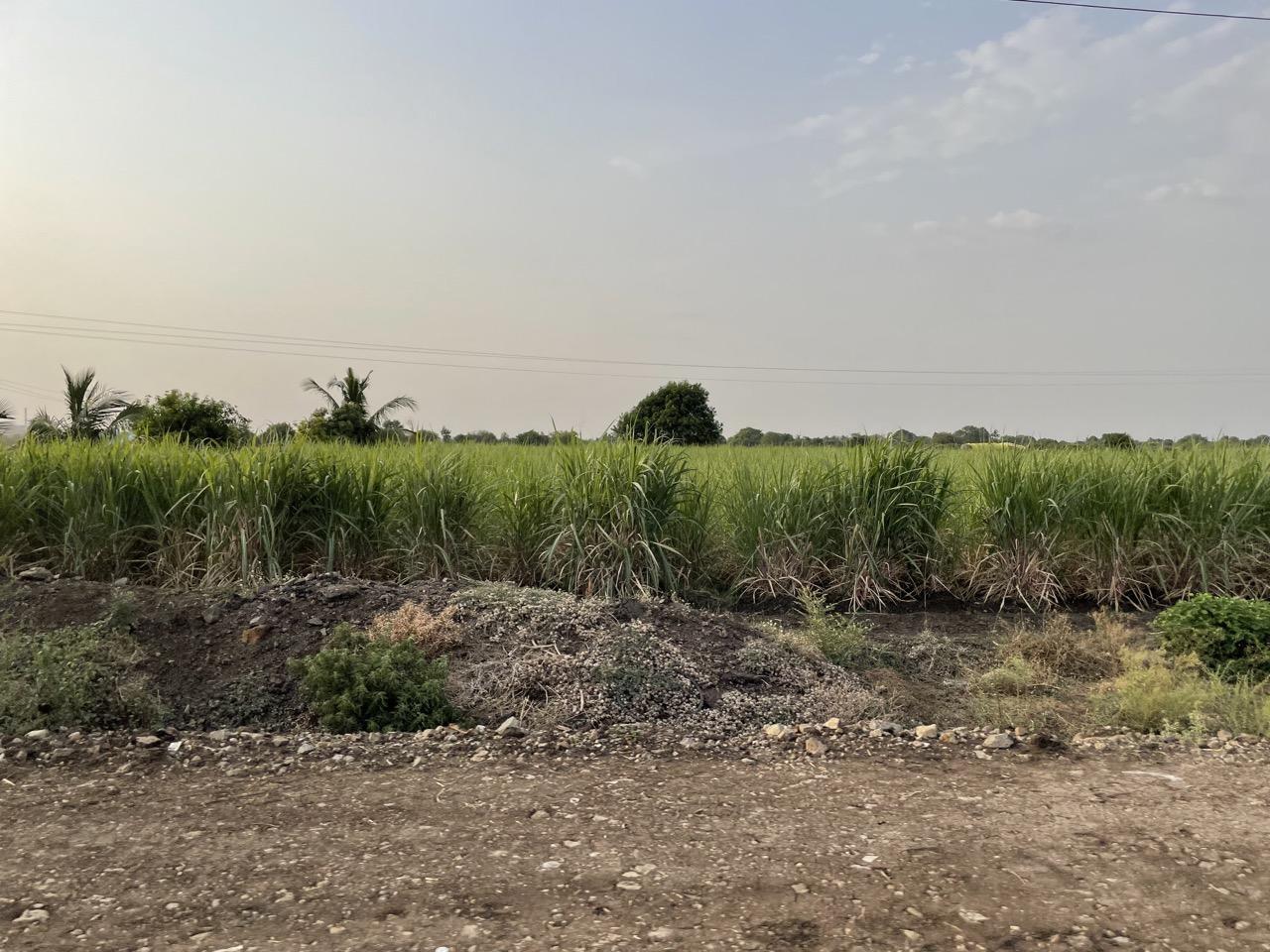
Dharashiv district lies entirely in the Western part of the Deccan Plateau. Its weather is usually Hot Semi-Arid, and some of the major types of soils found are deep black soil, medium deep black soil, and shallow black soil. It is drained by several significant rivers, such as Bhima, Terna, Godavari, Bhogavati, Bori, Benitura Nagjhari, and more. The area's agricultural landscape is home to a variety of crops, which are all cultivated across different seasons.
Foodgrains are the dominant crops in Dharashiv. These include both cereals and pulses. Rabi Jowar, a type of sorghum, is the leading cereal crop and is cultivated during the rabi season. Kharif Bajra, another type of millet, holds the second position among cereals and is primarily cultivated during the kharif season.
Pulses such as tur (pigeon pea), mung (green gram), and urad (black gram) are also prominent crops in Dharashiv. Tur, a two-seasonal crop with a 170-day duration, is typically sown in the last week of June or the first week of July. Mung and Urid are considered short-duration crops that generally do not require irrigation under normal conditions.
Oilseeds such as soybean and sunflower are the primary varieties grown during the kharif season. In the rabi season, safflower is the major oilseed crop, while groundnut is the principal oilseed cultivated during the summer.
Sugarcane, a heavily irrigated crop requiring substantial water input, occupies a significant area in the district. While it was a high-yielding crop in the past, its average yield has declined due to factors like insufficient adoption of integrated nutrient management and improved irrigation practices. Though it has not always been the dominant crop in the area, and become popular only since the 1970s. Cotton is another notable crop cultivated in Dharashiv, contributing to the region's agricultural diversity.
Agricultural Communities
In Dharashiv district, agriculture has long been the cornerstone of the economy, and many were engaged in it. Historically, the class of farmers was divided into ordinary cultivators, growers of special products, and those involved in forestry. Over time, a shift occurred, with land moving from cultivators to rent-receivers. This created a class of large landlords. By 1951, Dharashiv had the highest proportion of people supported by agriculture among districts in the ex-Hyderabad State, with a significant presence of owner-cultivators and agricultural labourers. The reliance on agriculture increased further in 1961 due to population growth and limited non-agricultural opportunities.
Festivals/Rituals related to farming
Dhawara
Shahu Patole, in his book Dalit Kitchens of Marathwada (2024), talks about the cherished tradition of Dhawara. This tradition marks the celebration of a successful harvest with a sacred meal. The preparations for Dhawara begin on the new moon of Diwali, a day dedicated to worshipping the Pandavas, the five legendary brothers from the Mahabharata. In the fields, five small stones are selected and painted with Chuna (limewash), symbolising the Pandavas.
As part of the ritual, wheat flour dough is shaped into various forms, such as plain balls, fruits, and lamps, before being steamed. These, along with dried dates, dry coconut, Ambil (a tangy buttermilk preparation infused with chillies and coriander), Kadhi (a tempered chickpea-buttermilk curry), and Wadya (steamed gram flour cakes), are offered as Naivedya (a devotional offering). A Morva (medium-sized earthen pot) and Shendur (a sacred red powder) are also placed near the symbolic Pandavas.
In keeping with tradition, five stacks of Jowar Pachundas (bundles of harvested sorghum) are arranged upright before the stones. A lamp is then placed inside the Morva and lit as a mark of reverence. At dusk, the Morva is carefully buried near the painted stones, symbolising the completion of the Dhawara ritual and expressing gratitude for the harvest.
Yel Amavasya Puja
A puja similar to Dhawara is performed during Yel Amavasya (the new moon night that falls in January). The Yel Amavasya puja is still a common and notable festival related to farming in the Ashmak region, which comprises areas of present-day Maharashtra and Karnataka.
Types of Farming
Farming in Dharashiv is primarily shaped by its semi-arid climate, with rainfed agriculture being the most common practice. Farmers depend heavily on the southwest monsoon, which typically arrives in June and lasts until October. Crops like pigeon peas, sorghum, black gram, soybean, and sunflower are widely grown in rainfed conditions. However, frequent droughts due to delayed or insufficient rainfall make agriculture challenging. Farmers often use drought-tolerant crop varieties and intercropping methods, such as pairing sorghum with pigeon pea, to improve resilience and make better use of limited water.
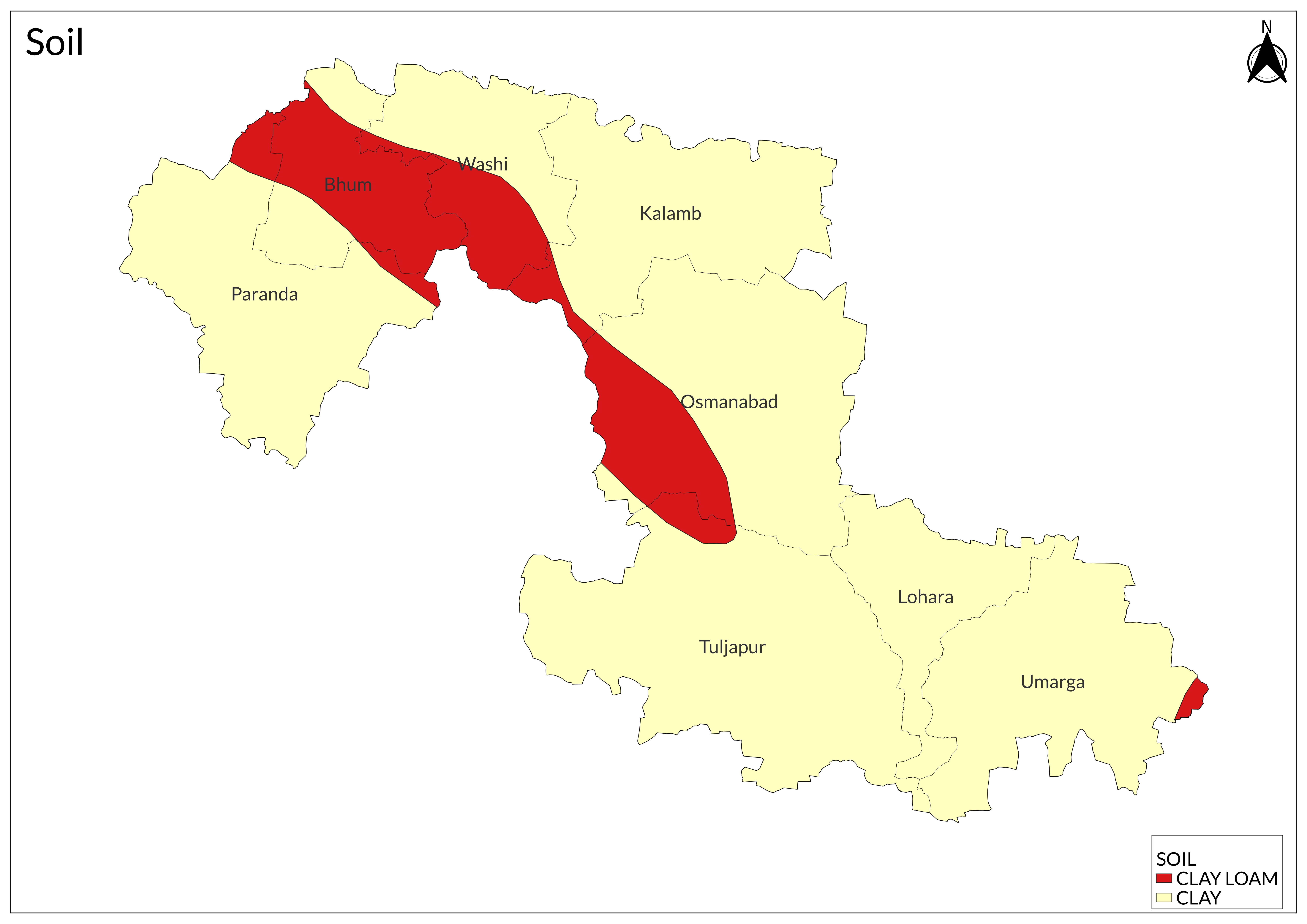
In addition to rainfed farming, irrigated agriculture plays a significant role, especially for water-demanding crops like sugarcane. With water availability being limited, efficient irrigation techniques such as drip irrigation are increasingly recommended. The district’s farmers are also encouraged to adopt alternative cropping patterns in times of water scarcity by shifting from high-water-use crops like sugarcane to less water-intensive ones like cotton or maize, which helps farmers in optimising available water resources and reducing their dependence on rainfall.
Farmers in Dharashiv also face challenges from unseasonal weather, such as heavy rainfall and high-speed winds, which can damage crops. To mitigate these effects, they use techniques like draining excess water and using nutrient sprays to aid crop recovery. The district is prone to pest and disease outbreaks following unseasonal rains, and farmers are advised to follow specific pest management strategies, including the use of protective sprays and soil treatments. Livestock farming is also a part of Dharashiv's agricultural system. Farmers face challenges during adverse weather conditions like droughts and floods, where ensuring feed and water availability becomes critical. Contingency strategies focus on maintaining livestock health and ensuring the availability of fodder during such difficult periods.
Traditional Agricultural Practices
Dashparni Extract
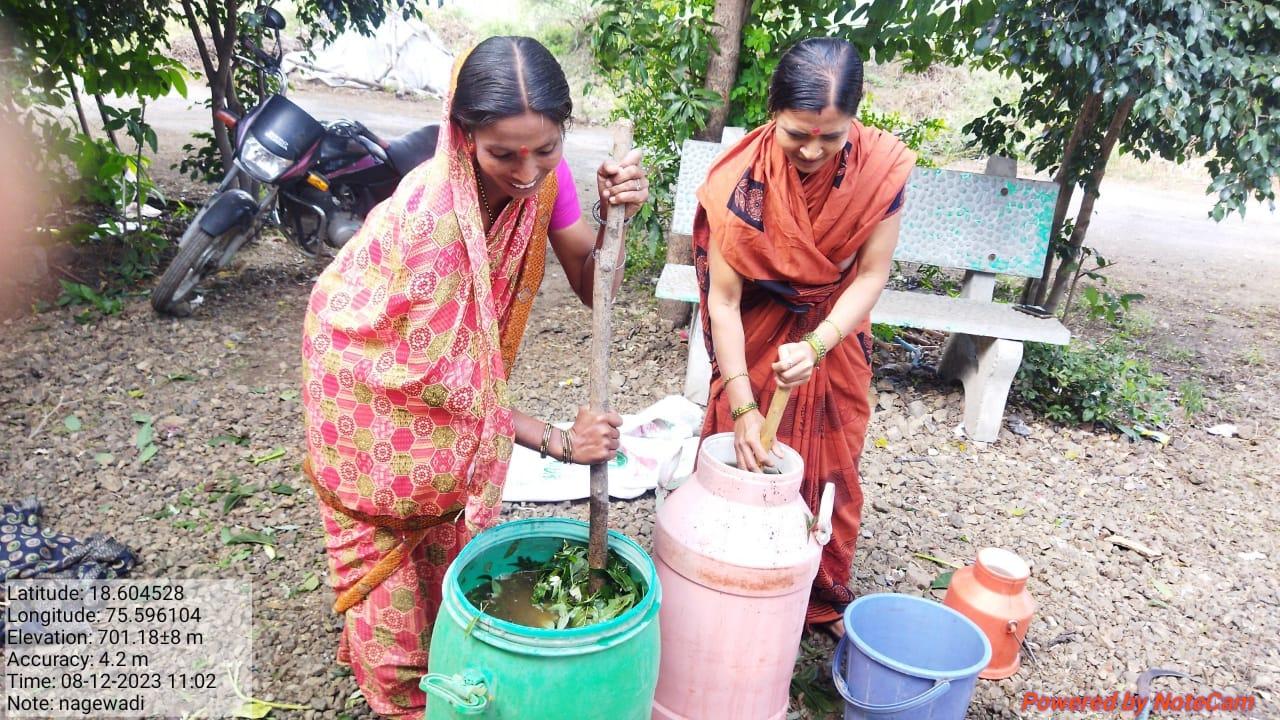
Dashpani extract is an organic fertiliser-pesticide which is made out of a variety of ingredients such as Water, Cow urine and dung, leaves of Gulvela (Heart-leaved moonseed), Papaya, Neem, Karanja (Pongame), Nirgudi (Chinese chastetree), Tantani (West Indian Lantana), Sitaphal (Custard Apple) and Rui (Giant calotrope), and Red Kanheri. These ingredients are put in a covered drum and are left in a shaded region to ferment for 30 days. The mixture is stirred every morning and evening with the help of a stick. After the fermentation is complete, the mixture is filtered through a sieve. The preparation is called Dashparni extract (आर्क) and is used for up to 6 months.
Jivamrut (जिवामृत)

Jivamrut is an organic fertiliser that is made out of a variety of ingredients such as Water, Cow urine and dung, Gram flour, Mud from an anthill, and Jaggery. These ingredients are put in a covered drum and are left in a shaded region to ferment for 2 to 3 days, and are used for spraying within 7 days. The mixture is stirred 2 times a day. It is extremely helpful as it increases the immunity of crops, encourages bacterial growth in the field, and also increases the plant's resistance to water deficiency.
Use of Technology
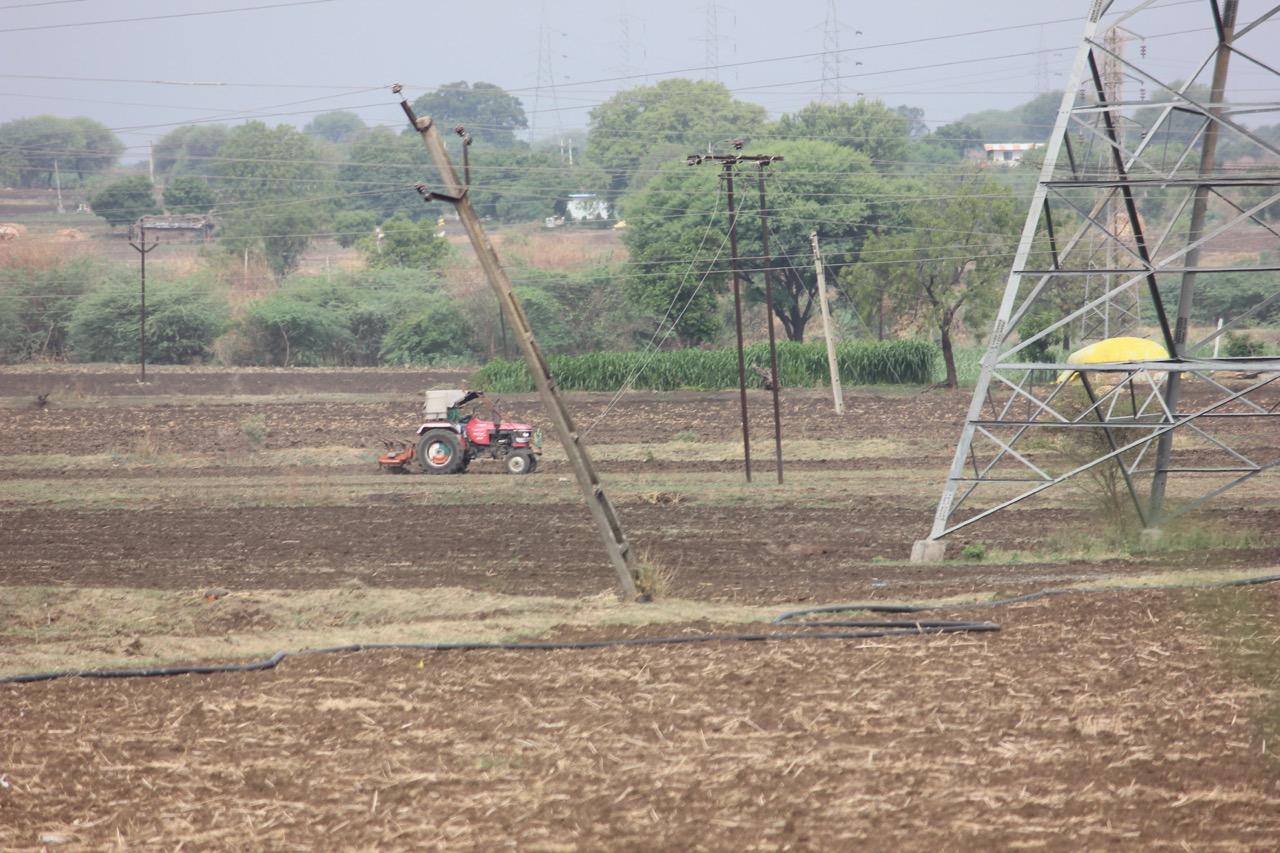
In Dharashiv, most farmers now have smartphones, and transactions are frequently conducted through platforms like PhonePe and Google Pay. The use of technology in farming has grown significantly, with farmers benefiting from various government schemes. They are utilising solar panels, dryer machines, and shade nets to enhance crop production. Smart irrigation techniques, such as drip irrigation, are also being adopted. While most farmers, apart from smallholders, own tractors, some are experimenting with innovative practices like zero tillage to improve crop yield
Institutional Infrastructure
According to the NABARD’s Potential Linked Credit Plan (2023-24) report, Dharshiv has an underdeveloped agricultural infrastructure, including 9 Agricultural Produce Market Committees (APMCs), 89 godowns, 1 cold storage facility, 3 soil testing centres, 22 plantation nurseries, 234 farmers' clubs, and 872 fertiliser, seed, and pesticide outlets. Additionally, there is one Krishi Vigyan Kendra (KVK) supporting agricultural extension services in the region.
College of Agriculture, Dharshiv
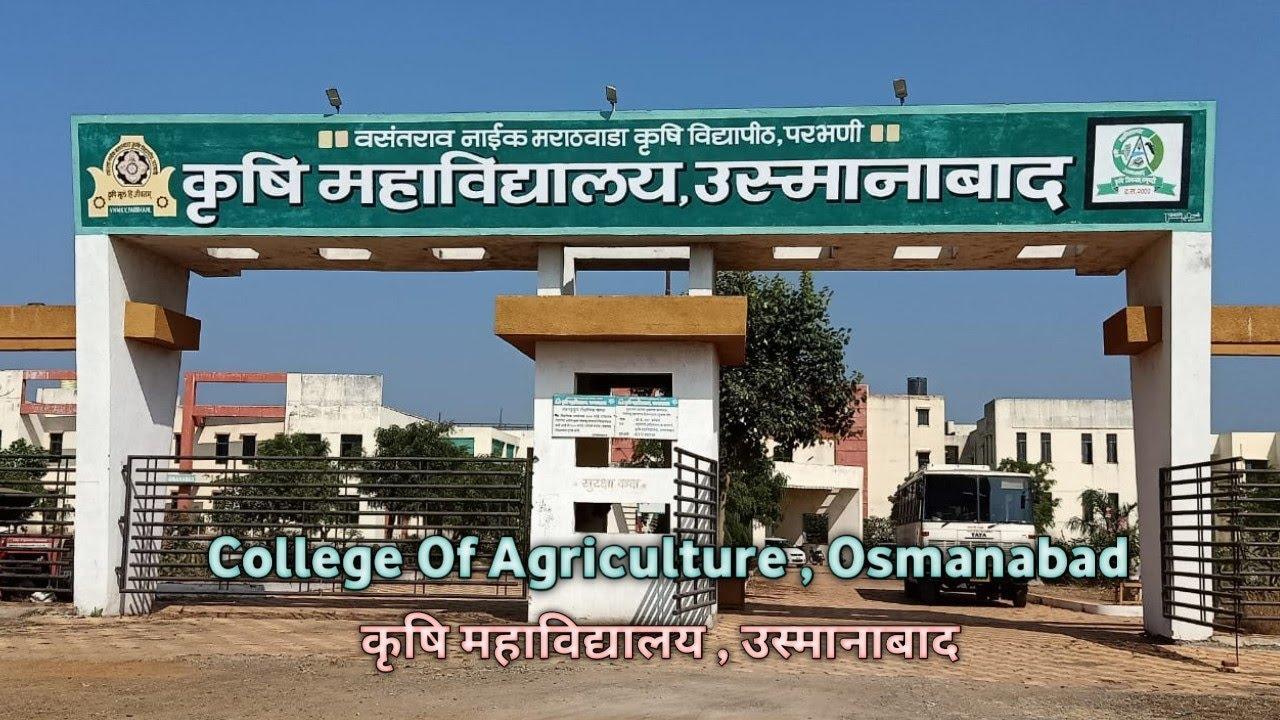
The College of Agriculture, Dharashiv, was established in the year 2000 to provide higher educational opportunities to students aspiring for agricultural education. The college is a constituent of the renowned Vasantrao Naik Marathwada Krishi Vidyapeeth, Parbhani.
The college currently has 10 departments, namely, Agronomy, Agriculture, Botany, Agriculture Economics, Agriculture Entomology, Agriculture Engineering, Animal Husbandry & Dairy Science, Horticulture, Plant Pathology, and Soil Science & Agricultural Chemistry.
Market Structure: APMCs (as of September 2024)
List of APMC markets(as of September 2024)
|
Sr. No |
Name |
Est. Year |
Chairman |
No. of Godowns |
|
1 |
Bhoom |
1981 |
Kumar Barkul |
NA |
|
2 |
Dharashiv |
1959 |
Rajendra Balasaheb Patil |
4 |
|
3 |
Kalamb |
1953 |
Shivji Digambar Kapse |
9 |
|
4 |
Lohara |
1900 |
NA |
NA |
|
5 |
Murum |
1961 |
Bapurao Madhavrao Patil |
2 |
|
6 |
Paranda |
1976 |
Jaykumar Jivraj Jain |
NA |
|
7 |
Tuljapur |
1984 |
Sachin Prakashrao Patil |
1 |
|
8 |
Umarga |
1988 |
Randhir Govindrao Pawar |
4 |
|
9 |
Washi |
2003 |
Ranjeet Manik Gaikwad |
NA |
Farmers Issues
Rainfall issues
Dharashiv district is located in a region of Maharashtra that experiences highly variable rainfall, which has long shaped its agricultural landscape. Farming in the district depends largely on monsoon rains, as irrigation facilities are limited and not all farmland is connected to reliable water sources. This dependence makes agriculture especially vulnerable to periods of drought and erratic weather.
In many years, the district faces early or mid-season dry spells that disrupt sowing and crop growth. When rains fail or arrive late, farmers often switch to drought-tolerant crops and adopt water-saving methods to manage scarce water supplies. While such practices help sustain farming during dry periods, they often lead to lower yields compared to normal rainfall years. When rainfall is insufficient, water stored in dams and canals is also affected, resulting in delayed or limited releases for irrigation. This particularly impacts crops that need large quantities of water, such as sugarcane.
At the same time, Dharashiv’s farmers also contend with the opposite problem, which is sudden heavy rainfall and storms. Unseasonal downpours and strong winds can damage standing crops by causing waterlogging or lodging, which is when crops bend or break under excess moisture or wind pressure. Fruit orchards are especially at risk of damage when trees are uprooted or branches break. Such wet conditions also create a favourable environment for pests and plant diseases to spread, adding to farmers’ difficulties.
The district’s dependence on rainfall has made it prone to famines throughout its history. One of the earliest recorded famines, known as the Durga Devi famine, began in 1396 and is said to have lasted twelve years. It is noted in the district Gazetteer (1972) that between 1629 and 1685, eight famines occurred, caused by both droughts and wars that disrupted food supplies. In the 18th century, four famines were recorded, one due to excessive rainfall in 1702 and the others linked to drought. During the 19th century, twelve famines took place; all but one were caused by drought. The exception, in 1825, was the result of unusually heavy rainfall that damaged crops instead of helping them grow.
Historical records show that rainfall shortages continued to affect the district well into the 20th century. Between 1891 and 1901, below-normal rainfall in most years led to poor harvests and forced the government to waive land revenue on a large scale. A severe famine hit in 1900, following several years of scarcity that began in 1894. Another difficult period was between 1911 and 1921, when seven out of ten years saw deficient or irregular rains. After 1916, unseasonal rainfall continued to cause poor crop outcomes. In later years, specific areas such as Parenda taluka faced severe drought in 1946, while widespread scarcity and related health issues affected the entire district in 1950. These events highlight how Dharashiv’s agriculture has repeatedly suffered from both drought and excessive rain.
Extreme weather also affects livestock management, which plays an important role in the local rural economy. During droughts and floods, farmers often struggle to secure enough fodder and drinking water for their animals and to prevent the spread of diseases. Many farmers also face difficulties in obtaining good-quality seeds, fertilisers, and other inputs, which makes government support schemes essential for continuing farm activities. When crops fail, the lack of adequate crop insurance leaves many farming families exposed to severe financial losses. Delays in compensation add to the burden, making it harder for affected households to recover after a poor season.
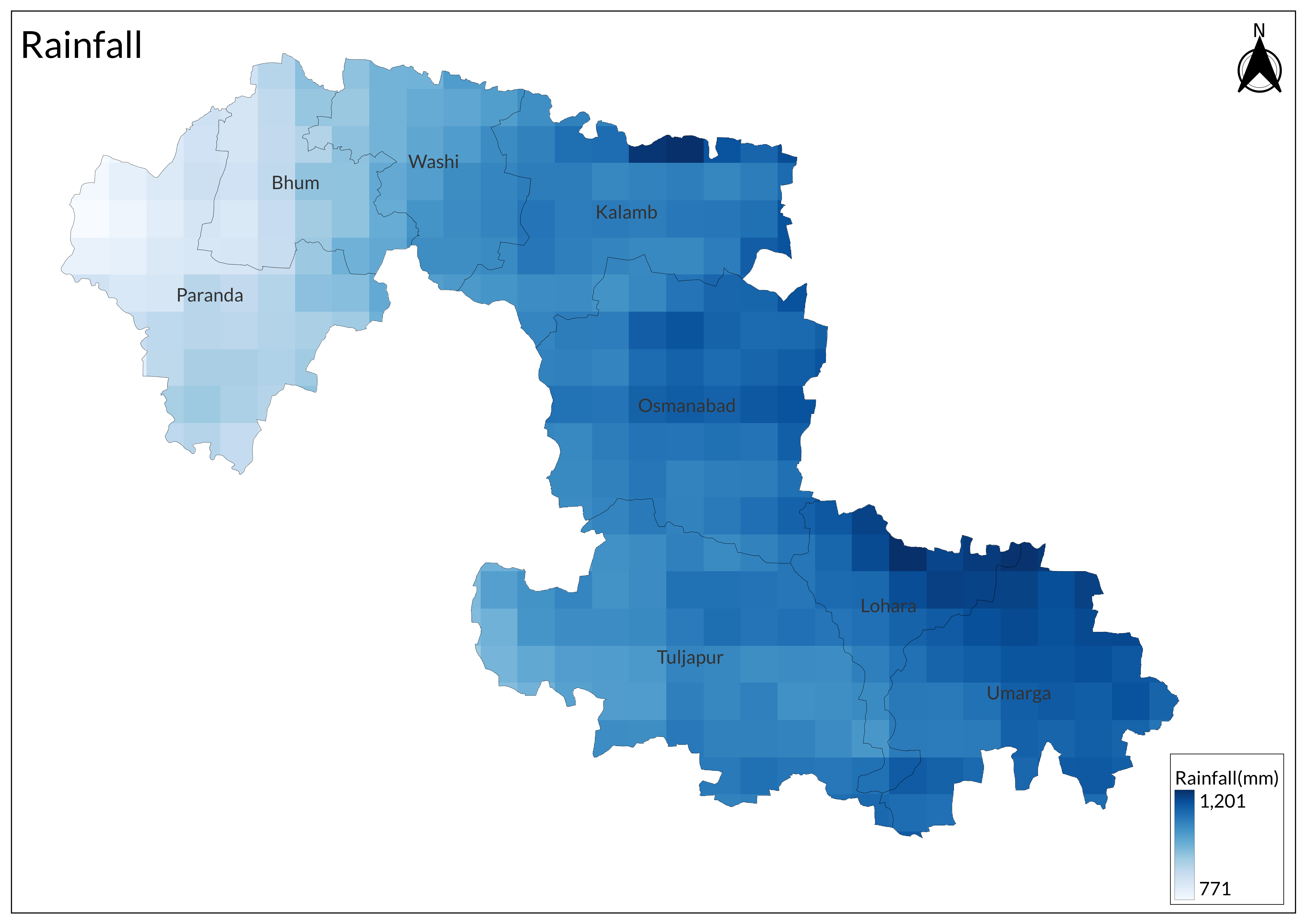
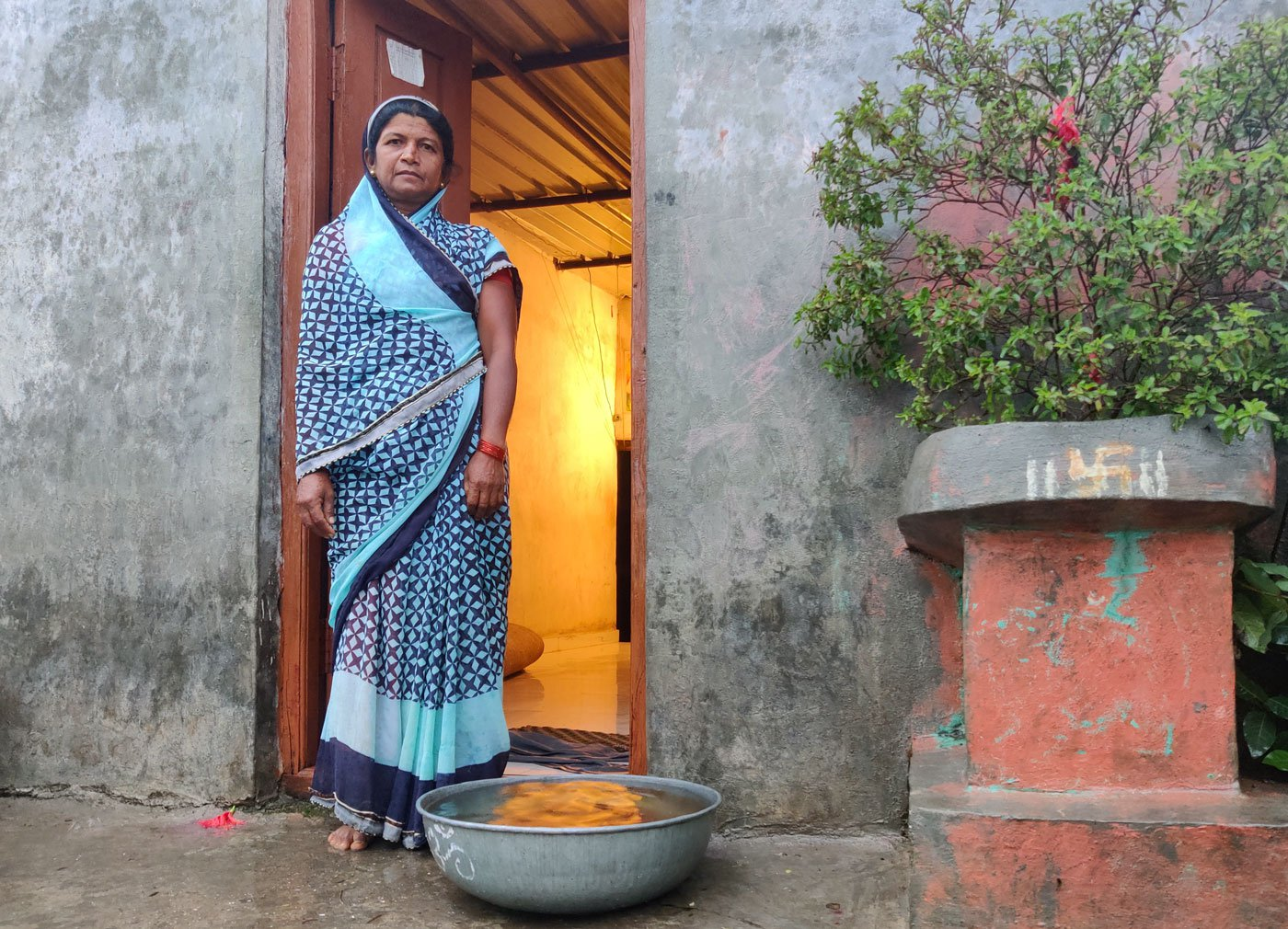
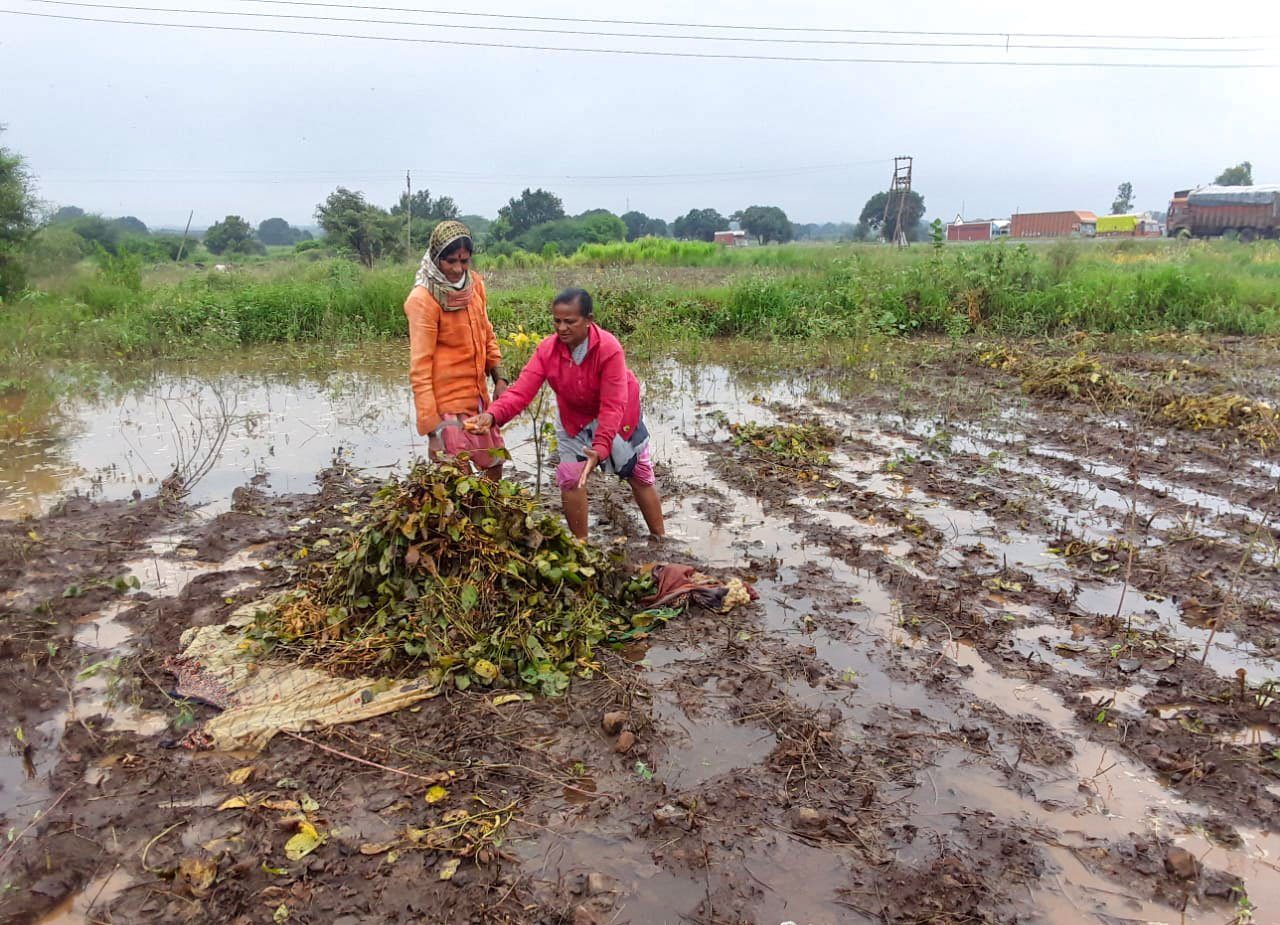
Graphs
Irrigation
Cropping Metrics
Land Use and Credit
Sources
A Geographical Study of Major Crops in Dharashiv Districthttps://ijariie.com/AdminUploadPdf/A_Geograp…
Gazetteers Department. 1972. District Gazetteers, Osmanabad District.Government of Maharashtra.https://gazetteers.maharashtra.gov.in/cultur…
ICAR. MAHARASHTRA Agriculture Contingency Plan for District: DHARASHIV.ICAR - CRIDA - NICRA.https://www.icar-crida.res.in/assets/img/Boo…
M.N., Parth. 2020. "In Osmanabad: Crop Insurance, No Assurance." People's Archive of Rural India.https://ruralindiaonline.org/en/articles/in-…
NABARD. 2023-24. Potential Linked Credit Plan: Dharashiv. Maharashtra Regional Office, Pune.4https://www.nabard.org/auth/writereaddata/te…
Shahu Patole. 2024. Dalit Kitchens of Marathwada, Anna he apoorna Brahman. Harper Collins.
V. S Anigunte, and Chandanshive Samadhan. 2019. A Geographical Study of Major Crops in Osmanabad District. Vol. 1 no. 6.International Journal of Advanced Research and Innovative Ideas in Education.
Last updated on 6 November 2025. Help us improve the information on this page by clicking on suggest edits or writing to us.